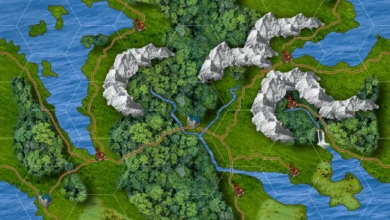How can data science help in predicting and managing natural disasters more effectively?

Data science is revolutionizing the way we predict and manage natural disasters, from earthquakes and hurricanes to floods and wildfires. By harnessing the power of big data, machine learning, and predictive analytics, scientists and disaster management experts are able to provide earlier warnings and improve emergency responses. This article delves into the various ways data science contributes to disaster readiness and resilience, emphasizing the blend of technology, expertise, and data.
The Role of Big Data in Natural Disaster Preparedness
Big data collects information from numerous sources such as satellites, sensors, and social media, creating a comprehensive picture of environmental conditions. By analyzing this data, scientists can detect patterns and anomalies that precede natural events, allowing for more timely warnings.
Machine Learning Models for Predicting Disasters
Machine learning algorithms learn from historical data, improving their predictions over time. These models can forecast the likelihood of certain disasters occurring, which helps in planning and implementing more effective preventive measures.
Enhancing Early Warning Systems with Predictive Analytics
Predictive analytics utilize current and historical data to make predictions about future events. In the context of natural disasters, these tools can significantly enhance the accuracy of early warning systems, giving people more time to evacuate or take other necessary precautions.
Real-Time Data Analysis for Immediate Response
During a disaster, real-time data analysis is crucial for effective response and resource allocation. Data science enables the rapid analysis of incoming data, which is vital for coordinating emergency services and providing aid where it is needed most.
Geographic Information Systems (GIS) in Disaster Risk Reduction
GIS technology plays a critical role in mapping disaster-prone areas and tracking the progression of ongoing disasters. By integrating various data layers, GIS helps in visualizing potential impact zones and planning evacuation routes.
Case Studies: Data Science in Action
Several case studies highlight the effectiveness of data science in disaster management. For instance, the use of data analytics in predicting the path of hurricanes has saved countless lives by improving evacuation plans and emergency responses.
Data-Driven Decision Making in Disaster Management
In disaster management, every decision can have significant consequences. Data-driven decision making ensures that those decisions are based on the latest and most accurate information available, which can lead to better outcomes during and after disasters.
Challenges and Limitations of Data Science in Disaster Management
Despite its many benefits, data science also faces challenges in the field of disaster management. Issues such as data privacy, the accuracy of models, and the integration of new technologies pose ongoing challenges.
The Future of Disaster Management with Data Science
Looking forward, the integration of artificial intelligence and IoT with data science promises to further enhance the capabilities of disaster prediction and management systems. These technologies could lead to even earlier warnings and more effective mitigation strategies.
FAQ: Data Science and Natural Disaster Management
How accurate are data science predictions for natural disasters? Data science improves the accuracy of predictions by using advanced algorithms and massive datasets, but predictions can still be subject to uncertainties due to the complex nature of natural phenomena.
Can data science predict all types of natural disasters? Data science is particularly effective at predicting certain types of natural disasters, like hurricanes and floods, but it has limitations with sudden events like earthquakes.
What is the role of public data in disaster management? Public data allows for more comprehensive risk assessments and better community preparedness, enhancing public safety and disaster resilience.
How can communities better use data to prepare for natural disasters? Communities can implement data-driven planning processes, use simulations to train for emergencies, and establish communication strategies that utilize real-time data during disasters.
What advancements can we expect in the near future in this area? Future advancements may include more sophisticated AI models that can predict disasters with greater accuracy and the increased use of drones and robots in disaster response efforts.
How does data science support recovery efforts after a natural disaster? After a disaster, data science can help assess damage, prioritize recovery efforts, and allocate resources efficiently to support those most in need.





